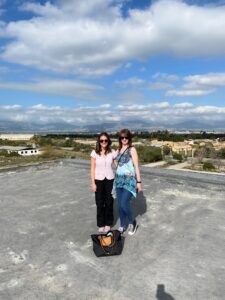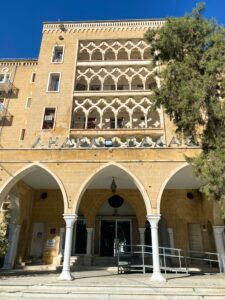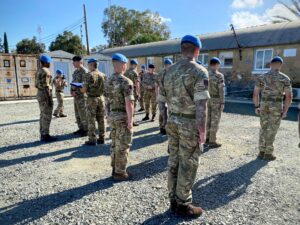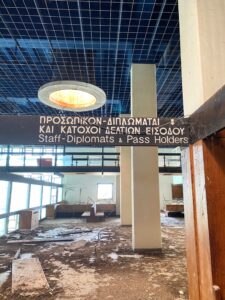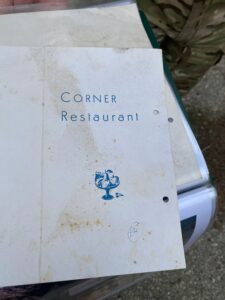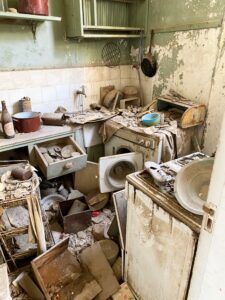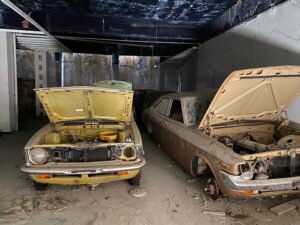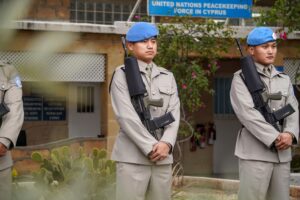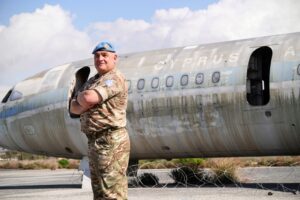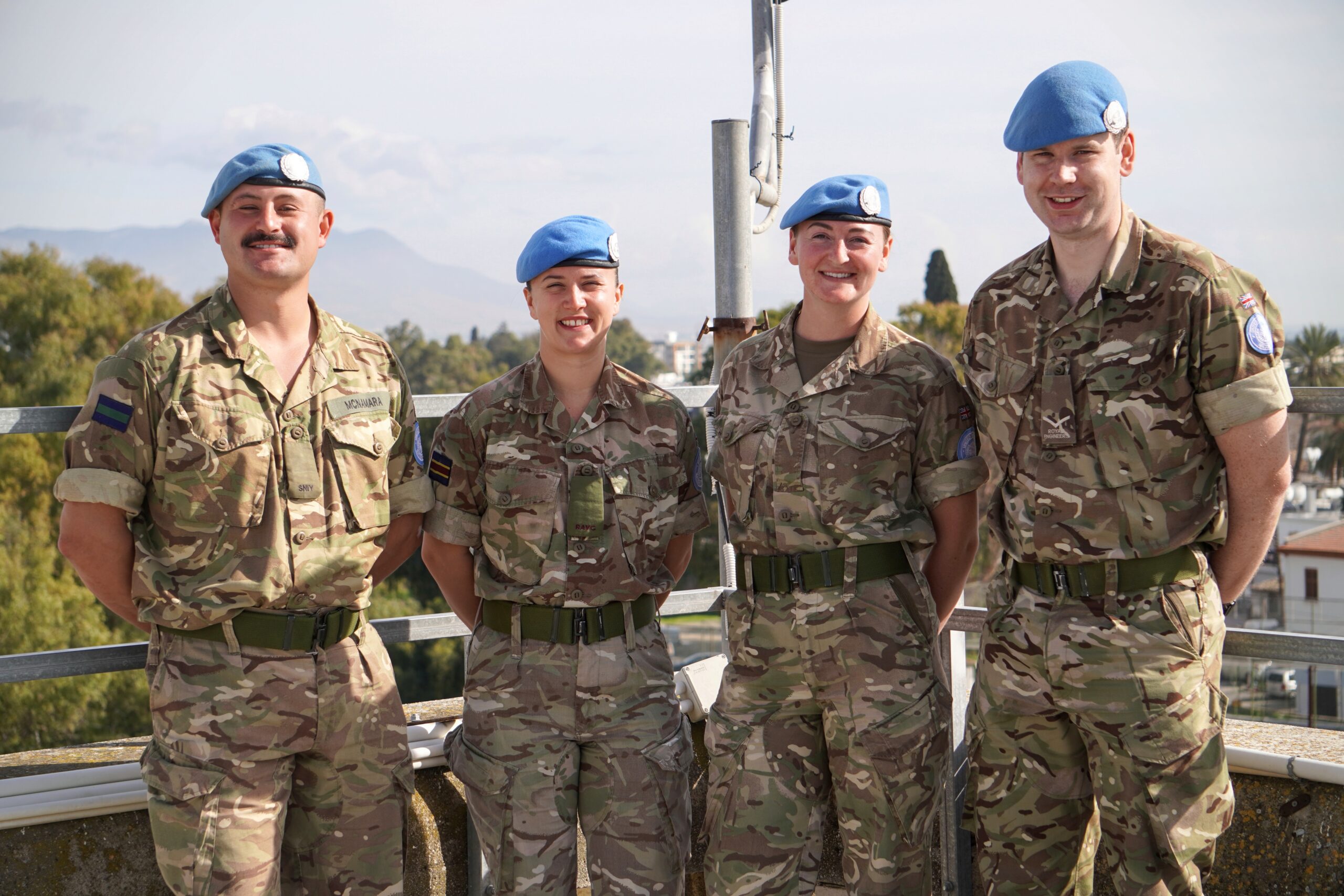
Monday 5 February was the start of an extraordinary week for the Lowland RFCA Communications Team as Kate and Emma embarked on a week-long adventure in sunny Cyprus.
Over the course of five eventful days, the Comms Ladies were hosted by Reservists from 71 Engineer Regiment, currently mobilised in Cyprus as part of Operation TOSCA, the UK’s contribution to the United Nations’ Peacekeeping Force on the island.
With the Regiment having a Reserve unit based in Paisley, the Lowland team were eager to learn more about Op TOSCA itself, what it meant for Scottish Reservists to take part in a global collaborative effort, and how mobilisation can benefit both Reservists and their civilian employers back home.
Here’s what Kate and Emma got up to on their trip.
Day One:
With an early start, caffeine was top of the agenda as the Comms crew met in Glasgow Airport Departures. The two ran through their plan of action for the week, keen to learn more about the work of the United Nations Peacekeeping Force in Cyprus (UNFICYP) and the role 71 Engineer Regiment have been playing in Op TOSCA since mobilising last September.
Landing in Larnaca over ten hours later, the team finally made it to their accommodation right in the heart of the island’s capital, Nicosia.
Day Two:
Tuesday dawned with plenty of sunshine and the Comms Ladies were soon on their way to Wolseley Barracks, the Nicosia-based centre of operations for the UK contingent of the UNFICYP mission located in Sector 2 of the UN Buffer Zone.
Next to the barracks sits the Ledra Palace Hotel (LPH), which was a stunning five-star establishment prior to the events of 1974. Since then, the hotel has served as the Sector 2 Headquarters and has hosted many British troops mobilised as part of Op TOSCA.
On arrival at Wolseley Barracks, Kate and Emma immediately got to work, touring the barracks and Tactical Operations Centre (TOC), a facility dedicated to monitoring all areas of Sector 2 and reporting any unusual activity within the Buffer Zone. It was mind-blowing to learn that the TOC staff keep diligent watch in twelve-hour shifts, and that a report from this single room can travel up the chain of command to the United Nations, even to the heart of the Greek, Cypriot or Turkish Governments in a matter of hours.
Next up was a tour of LPH. The hotel had been converted into a working military base with various messes, an education centre for gaining qualifications to go towards promotions, and a cookhouse in the old hotel ballroom.
Discovering that there was some Adventure Training (AT) taking place in Dhekelia, the team swiftly departed from Nicosia and enjoyed an afternoon filming on the beach as a joint crew of Regulars and Reservists showed off their kayaking skills.
Day Three:
The day finally arrived for an in-depth tour of the Buffer Zone and an opportunity to better understand its history, as well as the UN’s role in patrolling the area over the last sixty years.
The Comms team accompanied Reservists to the Blue Beret Camp (not Blueberry Camp, as they thought it was charmingly called!), a base camp near the abandoned Nicosia International Airport and home to the Mobile Force Reserve (MFR), a peacekeeping unit made up of both Regulars and Reservists. This unit is held at high readiness and trained in tasks ranging from public order to incident response. The MFR can also provide support to other Sectors and elements of UNFICYP, including patrolling the Buffer Zone and maintaining neutrality in the area between the Greek Cypriot south of the island and Turkish Cypriot north.
During a MFR briefing, Kate and Emma learned a great deal more about the unit’s recent work in monitoring areas of contention. These areas included Wayne’s Keep; a Commonwealth War Graves Commission military cemetery which lies within the Buffer Zone.
Another interesting point raised in the briefing was the successful integration of Reservists with their counterparts from the Regular Army and Gurkha units, bringing valuable skills from their various civilian backgrounds as teachers, engineers, builders, medics and computer experts into the mix.
The briefing over, it was back out into the sunshine to watch a Medals Parade, with UN medals being presented to several Army Regulars in recognition of their supportive efforts covering for Reservists taking some well-earned R&R.
After lunch in the UN Cafeteria where British, Argentinian and Slovakian troops regularly meet and mix, it was time to visit some key landmarks within the Buffer Zone. One of the most striking sites on the itinerary was Nicosia International Airport, a former RAF base converted into a state-of-the-art commercial structure in the late 1960s.
Guiding the visitors on the carefully cleared safety path through the abandoned airport was Captain Philip Brazier, a Reservist from 350 Field Squadron, 75 Engineer Regiment and a historian in the civilian world. Assisted by Sapper Charlie Littlewood, Captain Brazier provided a detailed narrative of the airport’s history, from its launch as a commercial airport in the 1960s to its significance as a strategic target in 1974. From the airport’s rooftop, clear conditions allowed for an unspoiled view of the Troodos Mountains in the south of the island, and the Kyrenia Mountains in the north. Throughout the tour, it was impossible not to be moved by the stories of civilians desperate to evacuate, homes abandoned and lives lost in such a short space of time.
Other sites visited on the tour included Kykko Camp, a former Finnish Contingent camp, and The Corner Restaurant, where Captain Brazier and Sapper Littlewood uncovered a collection of relics left behind after 1974, including silverware, a menu card and a ketchup bottle well past its expiry date.
With such an intensive history lesson to process, Kate and Emma were looking forward to a more relaxed evening, meeting up with 71 Engineer Regiment back at LPH before crossing a checkpoint into the so-called ‘Turkish Republic of Northern Cyprus’ (TRNC) for a mezze feast.
Day Four:
Another intensive history lesson for the Lowland contingent as they returned to LPH for some rooftop interviews with four Reservists, and then over to Wolseley Barracks for a TOC briefing, gaining further insight on the current areas of contention within the Buffer Zone.
The first stop on the day’s tour took the Lowland Comms team into the Central Area of Operation (AO), a section of the Buffer Zone that cuts through the Old Town of Nicosia and, at its narrowest point, divides the Greek Cypriot and Turkish Cypriot sides of the island by just three metres.
Walking between crumbling shop facades held up by wooden beams, exploring car dealerships filled with dusty vehicles never to be sold and viewing bullet-scarred apartments scattered with decaying clothes, furniture and newspapers, was like stepping onto the set of a disaster film; everything appears suspended in time while the rest of the world moves on at either side of the checkpoints. Understanding that there are still people living on the island who remember the events of 1974 and the tensions leading up to it, and who had to abandon their homes at a moment’s notice, left a very sombre feeling in the air.
Back at Blue Beret Camp that afternoon, the Comms team took advantage of a break in proceedings to watch soldiers from 36 Regiment rehearsing an Honour Guard for a VIP visitor to the camp, Deputy Commander Field Army Major General Aidan Smyth. After hearing so many tragic stories relating to Cyprus’ history for most of the morning, it was something of a palate cleanser to see a group of smartly-dressed soldiers parading past the many UN member flags flying outside the camp Headquarters.
For the second half of the day, the Comms team took their seats in a UN convoy truck and ventured into the Western AO. This section of the Buffer Zone is home to several areas of contention and is closely watched by the UN, Greek Cypriot National Guard and Turkish Forces at all times. Stopping outside one particular site it was almost surreal to stand between an abandoned, solitary house on one side, and turn to see newly built apartments only yards away on the Greek Cypriot side of the ceasefire line.
The convoy also passed by Wayne’s Keep cemetery and stopped briefly at the American Wives’ Club, where United States Embassy wives could meet and socialise, helping each other to feel more at home away from home. The remains of the building bore marks of heavy gunfire, and the interior was fully overgrown with plants and trees stretching up through where the roof used to be. As with the previous day’s tour, the visit to the Central and Western AOs provided a harsh reminder of the devastating effects, both personal and geographical, of armed conflict, and of the importance of maintaining peace across the island.
Day Five:
Having been so impressed by the wealth of knowledge he had shared on the Wednesday tour, the ladies felt it was only right to end their trip by interviewing Captain Brazier.
Picking him up at Blue Beret camp, the group returned to Nicosia International Airport, this time turning away from the eerie husk of the terminal building to another icon of the island’s turbulent past: the remains of the last Cyprus Airways aircraft to land at the airport before the July 1974 invasion. Surrounded by a ring of razor wire, not much is left of the Trident aircraft after half a century of neglect and cannibalisation for parts.
Keen to make the most of their time with Captain Brazier, Head of Comms Kate quizzed him on his civilian career as a historian, what he had learned about Cyprus as a result of his mobilisation, and what UK Reservists bring to the Op TOSCA table.
For some extra Cyprus trivia, the Captain also explained how the Buffer Zone gained its other name of the ‘Green Line’: when the zone was first established in late 1963, Commander of the British Joint Force Major General Peter Young drew the ceasefire line on a map with a green chinagraph pencil.
Reflecting on everything she had seen and heard during the week, Emma said: ‘Until now I’ve only ever had a vague understanding of what happened in 1974 that led to the division of Cyprus. Being here with the UN Forces, being able to go right into the Buffer Zone and stand on the rooftops of buildings left empty for fifty years has been an eye-opener for me.
‘I feel privileged to have come on this visit, to have met so many incredible Reservists and to see real pieces of history that very few people ever get to see up close.’
Similarly moved by what she had seen, Kate commented: ‘Touring the Buffer Zone is a really helpful reminder of how quickly life can change; one moment you’re doing your ironing, the next you’re fleeing for your life. As you walk through the Buffer Zone it would be easy to think you’re in a special museum attraction or movie set, but you’re not; you are walking in the shadows of conflict. Bearing all of that in mind only emphasises the value of peace, and peacekeepers.
‘To think that Scottish Reservists are playing a part in this process is a helpful spur to zealously continue in our RFCA work of supporting and promoting Reservists in the Lowlands of Scotland.’
